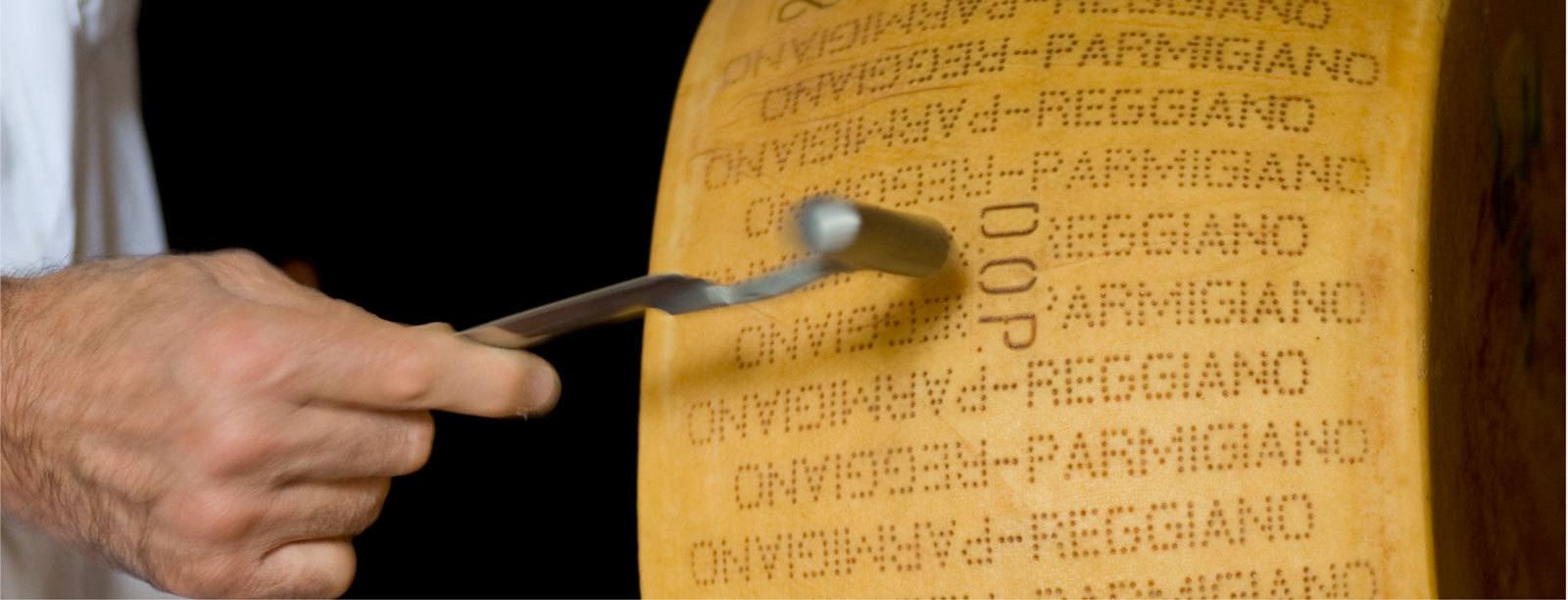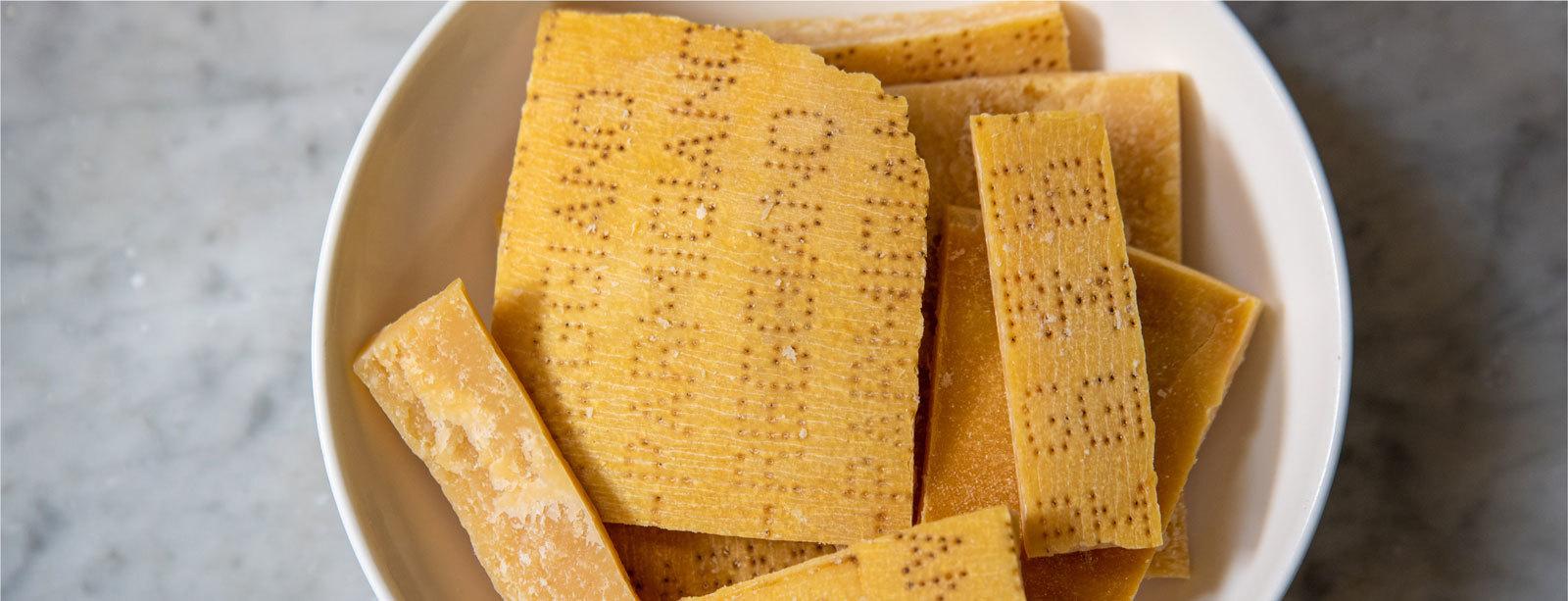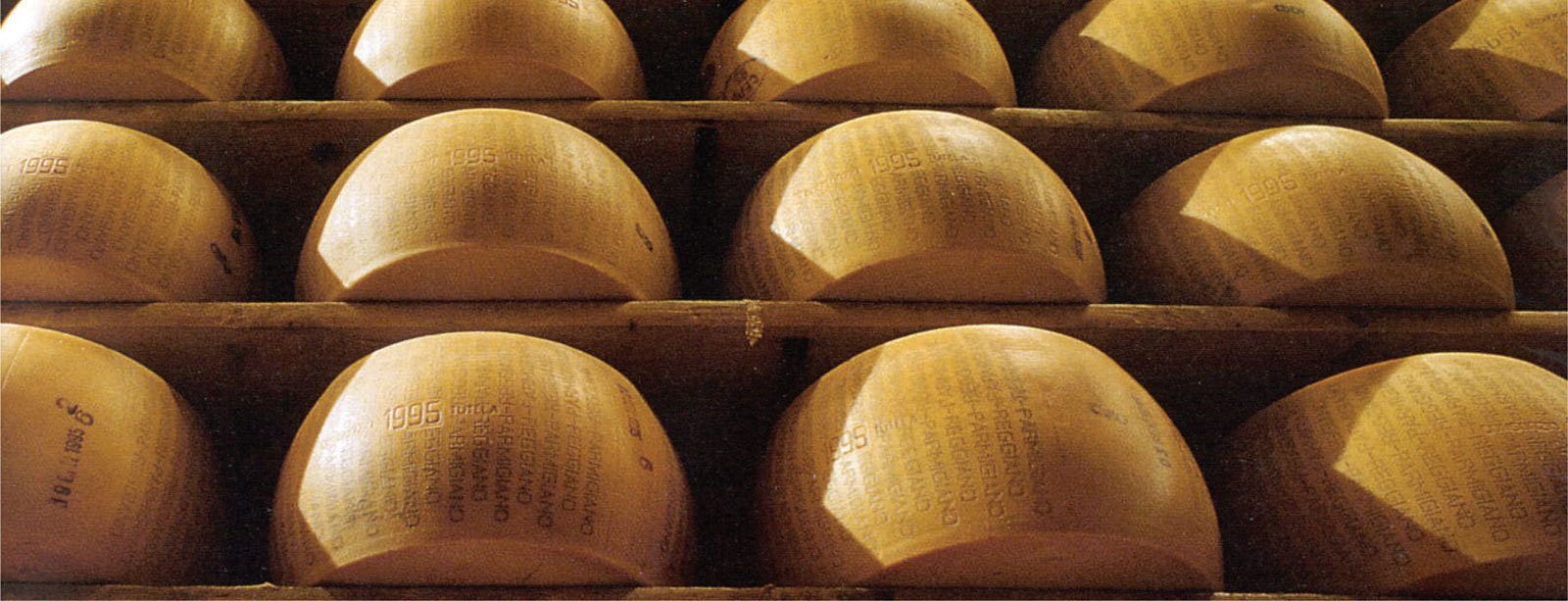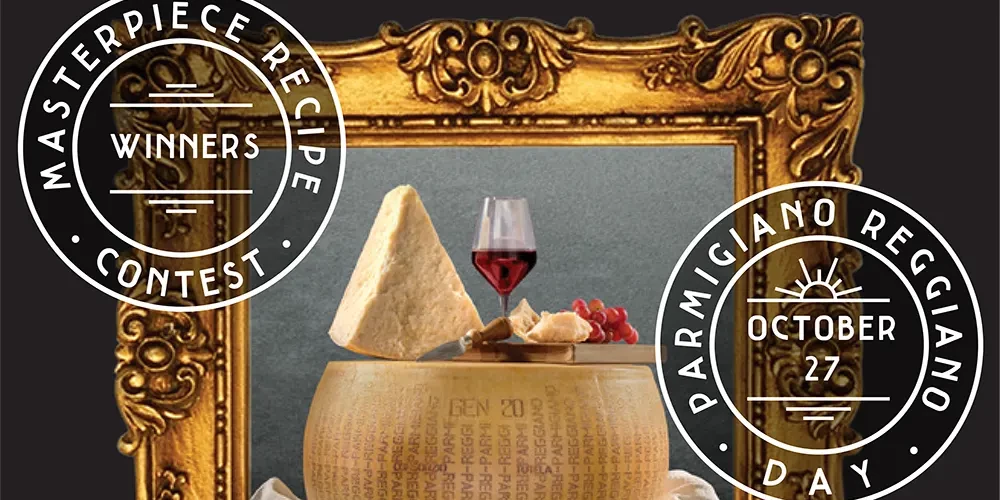Making memories with
Parmigiano Reggiano®
A NEW YORK WRITER MOVES TO ITALY AND FALLS IN LOVE WITH
PARMIGIANO REGGIANO CHEESE. HERE IS HER STORY.
Kristine Jannuzzi is a writer who moved from New York to Florence, has become a dual Italian and American citizen and has made it a point to visit almost every region of Italy. Her work has been published in many publications, including La Cucina Italiana, The Epoch Times, Italy Magazine, Italia Living, and more. In this article written for our blog, she shares her experiences with Parmigiano Reggiano cheese and how it has been a big part of some of her fondest memories of Italy and Italian culture.
Parmigiano Reggiano cheese is a product loved by Italians,
regardless of where they are from.
I spend a lot of time talking about food with my friends here in Italy, and regardless of what region they are from, they inevitably have memories of Parmigiano Reggiano cheese to share with me. From Sicily to Sardegna, and Piemonte to Puglia, Parmigiano Reggiano cheese is a beloved ingredient both in everyday life and on special occasions for Italians throughout the entire country.

Parmigiano Reggiano cheese Canestrini are easy to make, pretty to look at, and absolutely delicious.
My friend Francesca from Trapani told me about the simple spaghetti her grandmother used to make for her when she was a child, with just freshly grated Parmigiano Reggiano cheese and a drizzle of extra virgin olive oil. When Francesca makes the dish now as an adult living far away from her family, it reminds her of home and is her go-to comfort food. She also recalled the little canestrini (“baskets”) made from Parmigiano Reggiano cheese that her mom makes every year as a Christmas antipasto, filled with prosciutto and artichokes.

Every wheel of Parmigiano Reggiano cheese is inspected and must pass quality control tests.
Italians have a great respect for traditions.
And Parmigiano Reggiano cheese is a perfect example of this.
I find it pretty amazing that a cheese that originated in a region of northern Italy almost 1,000 years ago, and which can still only be made in the areas of Parma, Reggio Emilia, Modena, and parts of Bologna and Mantova, is so popular and widespread today. Very little about it has changed over the course of its history, and the same three ingredients—cow’s milk, salt, and rennet—are still used to make the cheese. Parmigiano Reggiano cheese has Protected Designation of Origin (PDO) status (DOP in Italian), so the production must adhere to strict rules from start to finish, and the cheese must pass rigorous testing and quality control before it can be labeled and sold as Parmigiano Reggiano cheese. With this level of passion and craftsmanship, it’s no wonder that Italians often talk about it as a “capolavoro” (a masterpiece).

To make sure you are buying Parmigiano Reggiano look for the signature pindots on the rind.
In Italy everyone knows how to spot this cheese.
Unfortunately, people in the US don’t always buy the real thing.
For Italians, buying Parmigiano Reggiano cheese is instinctual. Every Italian will be able to immediately point it out on a store shelf. Sometimes just by the aroma. However, I have noticed that in the US this is not the case. US consumers are sometimes confused by the name and the many other hard cheeses that try to pose as Parmigiano Reggiano cheese. Often, these cheeses are made in places that are quite far from where Parmigiano Reggiano is lovingly made by trained artisans. And often, those cheeses don’t taste anything like the original. So, here’s a hint: Look for the dots! You can easily identify Parmigiano Reggiano cheese by looking for the name in pin-dots on the rind—and by the way, don’t throw out those rinds! Use them to flavor soups and stocks, char them on the grill, or toss them into risotto. My Tuscan friend Marco recommends boiling the rind and then drizzling with honey, as his dad always does.

Parmigiano Reggiano cheese wheels are aged in storage facilities for at least 12 months.
Some things do get better with age.
Parmigiano Reggiano cheese is definitely one of them.
The minimum maturation time for Parmigiano Reggiano cheese is 12 months, the longest among all PDO cheeses, and most of what is sold in the US is aged at least 24 months. The flavor and texture evolve throughout the life cycle, and you can see the difference in color and structure between younger and older wedges as well. At around 2 years of age, Parmigiano Reggiano cheese is a beautiful balance of savory and sweet, with notes of pineapple, and a moist but grainy, crystalline texture. The flavor intensifies, with notes of nuts and spices, in wheels that are around 30-36 months, and the crunchy bits that are visible as white spots in the paste (sometimes mistaken for salt grains, but they are actually crystals of an amino acid, tyrosine) become more prevalent. Here’s something that is fun to do: buy a few different ages of Parmigiano Reggiano cheese and taste them in chunks, side by side, starting with the youngest to the oldest aging, and compare the different flavors and textures. You will be amazed at the difference in complexity, taste and granularity.

One of the best things about this exceptional cheese?
Its amazing versatility.
The different flavor profiles that come with the aging process contribute to the versatility of Parmigiano Reggiano cheese, which can be enjoyed in so many ways beyond grating it over your favorite pasta. I love to break off chunks of younger wedges and snack on them on their own, with a glass of something bubbly, like prosecco. Or pair it with fresh pears, a classic combination that my friend Laura from Rome describes as the ultimate union. By the way, it is also great sprinkled on salads, added to a frittata, or even shaved over a juicy steak. More mature Parmigiano Reggiano cheese can be used in fillings for baked or stuffed pastas or drizzled with balsamic vinegar or honey at the end of the meal. Aged wedges are a popular Christmas gift in Italy; my friend Riccardo from Naples said he’ll never forget the experience of breaking into a 50-month-aged piece of Parmigiano Reggiano cheese and tasting it together with his brother and his parents during the holidays.

Italy and Parmigiano Reggiano cheese.
This is how great memories are made.
I moved to Italy because I love the food, the people, the culture. Since being here, I learned that Parmigiano Reggiano cheese is a product that captures the very essence of this truly incredible country. For many of my Italian friends, this cheese has become a much beloved icon of their culture. It represents their passion for great food, their love of tradition, and their commitment to quality. I feel very lucky to be here because the memories that I am building in Italy, inspire me every day – and are certain to last a lifetime.
About Kristine Jannuzzi
Kristine Jannuzzi is a respected food and travel writer, social media specialist & cheese expert. After earning her BA in Journalism and Music Theory & History from NYU, she moved to Florence, and has become a dual Italian and American citizen. Her work has been published in La Cucina Italiana, The Epoch Times, Italy Magazine, Culture: The Word on Cheese, Italia Living, and Listen Magazine, among other publications. Kristine was one of the 2019 World Cheese Awards Judges.
Follow her on Instagram: @nyccheesechick
To learn more about Kristine, visit:
https://kristinejannuzzi.contently.com/
Latest Articles
Sign up for our newsletter!
Our monthly newsletter will include exclusive new recipes and pairings, information about upcoming events, tips on nutrition and health, chances to participate in exclusive giveaways, and more.


